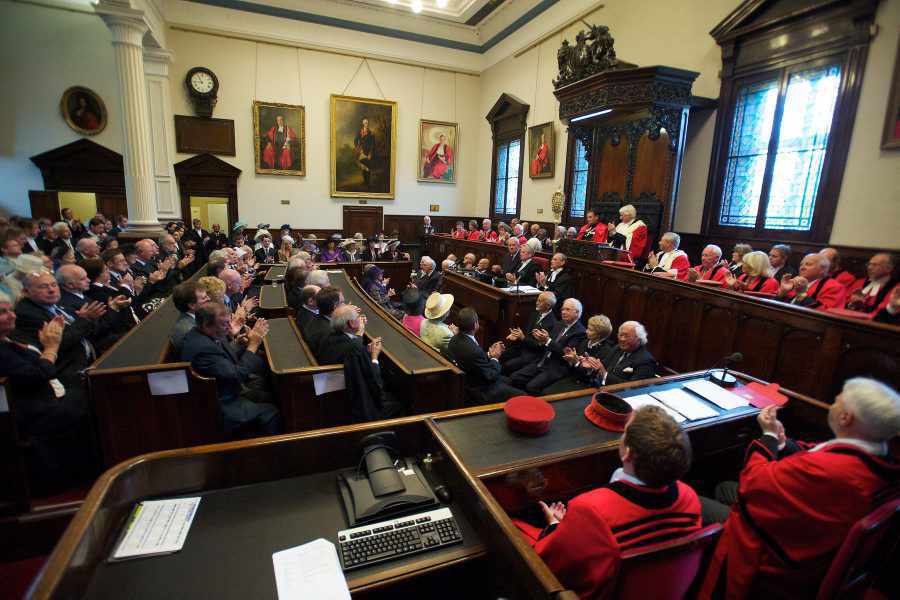His portrait now joins an illustrious long line of those of former Bailiffs whose regal poses adorn the Royal Court walls.
The bright red robe, trimmed in black, is the one unifying feature that remains virtually unchanged throughout the portraits – that and the steely, all-knowing gaze.
- The position of Bailiff for Jersey (and Guernsey) was created in the 13th century when King Henry III appointed a warden (now the Lieutenant Governor) and Bailiff to run the Island on his behalf with the Bailiff acting as both legislator and judge.
- These days one of the Bailiffs main roles is that of Chief Justice head of the Islands legal system, who presides over the Royal Court.
- He is also President of the States Assembly, which allows him to sit as the speaker in the States similar to the role of the speaker in the House of Commons,
- He also has a civic function and as first citizen attends events such as the Liberation Day and Remembrance Day commemorations where he will give a speech.
While the accused and the officials of the Royal Court are the main viewers who have the time to admire the portraits, people have the chance to see them when the court is open to the public.
The painting of the latest retiring Bailiff, Sir Michael Birt, was unveiled in the Royal Court last week. Sir Michael has served five years in the role, nine years as Deputy Bailiff and a further six as Attorney General.
The oil on canvas work, painted by Russian artist Valeriy Gridnev over the course of six months, features Sir Michael in a sitting position looking directly out at the viewer.
Mr Gridnev, who moved to the UK in 1999 and who is part of the Royal Society of Portrait Painters based in London, said that Sir Michael was a ‘model subject’ and that it was an ‘honour’ to paint him during sessions which lasted up to three hours.
Philippe Le Geyt. Lieutenant Bailiff of Jersey in 1716 had to grapple with a Jacobite plot during his term of office. In Agatha Christy style the suspicious characters included a priest, a mysterious lady with a boat and Sir Edouard de Carteret, King James’ Cup Bearer.

Thomas Pipon, Lieutanant Bailiff 1802 By Phillipe Jean
A Bailiff who wandered from sartorial tradition and decided to forgo the bright red robe in his portrait.

John Hammond, Bailiff of Jersey 1858 – 1880 by William M Hay
When Victoria came to the throne everyone in the island spoke Jersey Norman French and Harrison CMG OBE is regarded as one of the giants of the Victorian era – along with his giant mutton chops.
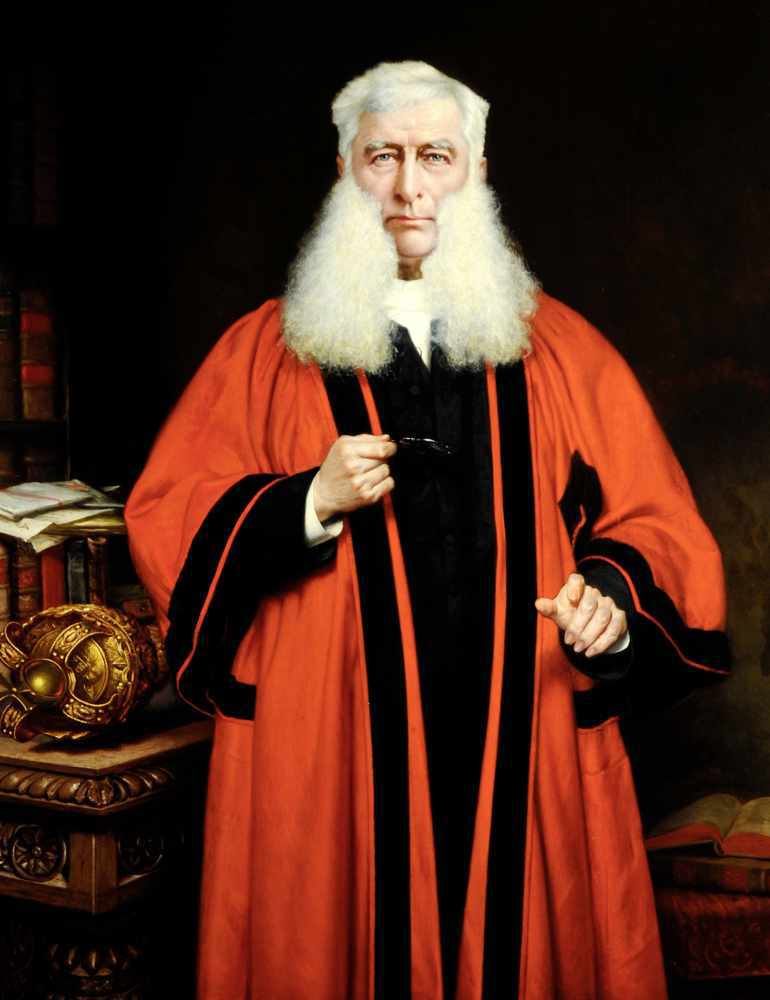
Sir William Henry Venables Vernon, Bailiff of Jersey 1899 – 1931 by John St Helier Lander
Another notable Victorian wnose time in office saw the introduction of a mains supply of electricity to the Island in 1924 and the opening of the Barreau art gallery at the Société Jersiaise in 1925. Sir Henry was the President of the Sociéte at the time and officially opened the gallery.
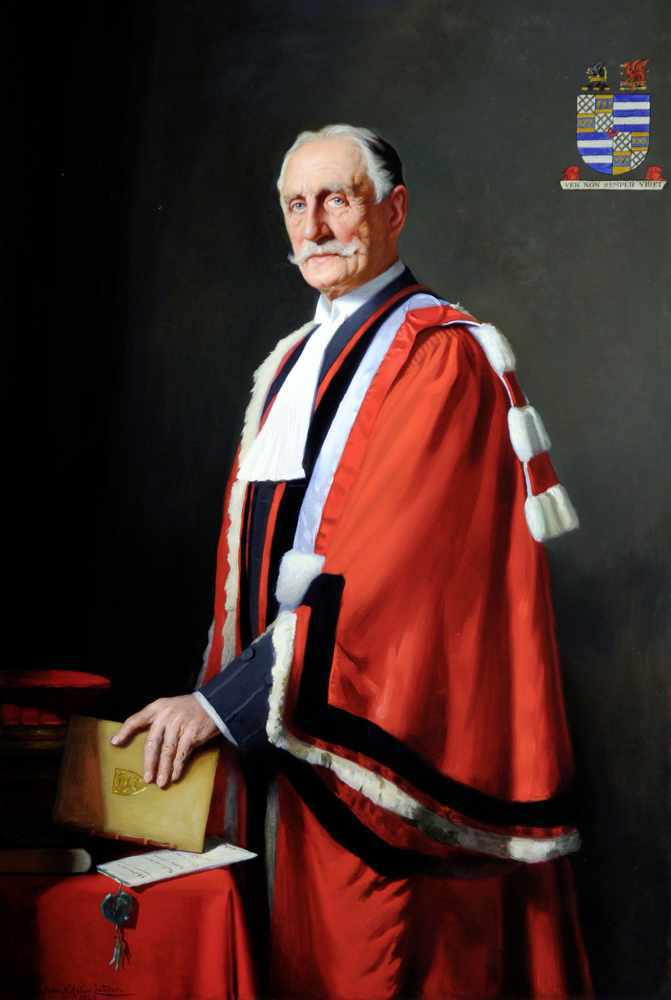
Lord Alexander Coutanche, Bailiff of Jersey 1935 – 1961, by Herbert James Gunn
Born in St Saviour in 1892 Alexander Moncrieff Coutanche, is best known for being the Bailiff during the Occupation. He had the task of surrendering the Island to the Germans but happily was still in office on Liberation Day – which was also his birthday.

Cecil Stanley Harrison, Bailiff of Jersey, 1962, by Herbert James Gunn
The shortest serving Bailiff, he was in office for less than a year, from 1961 before his death in 1962
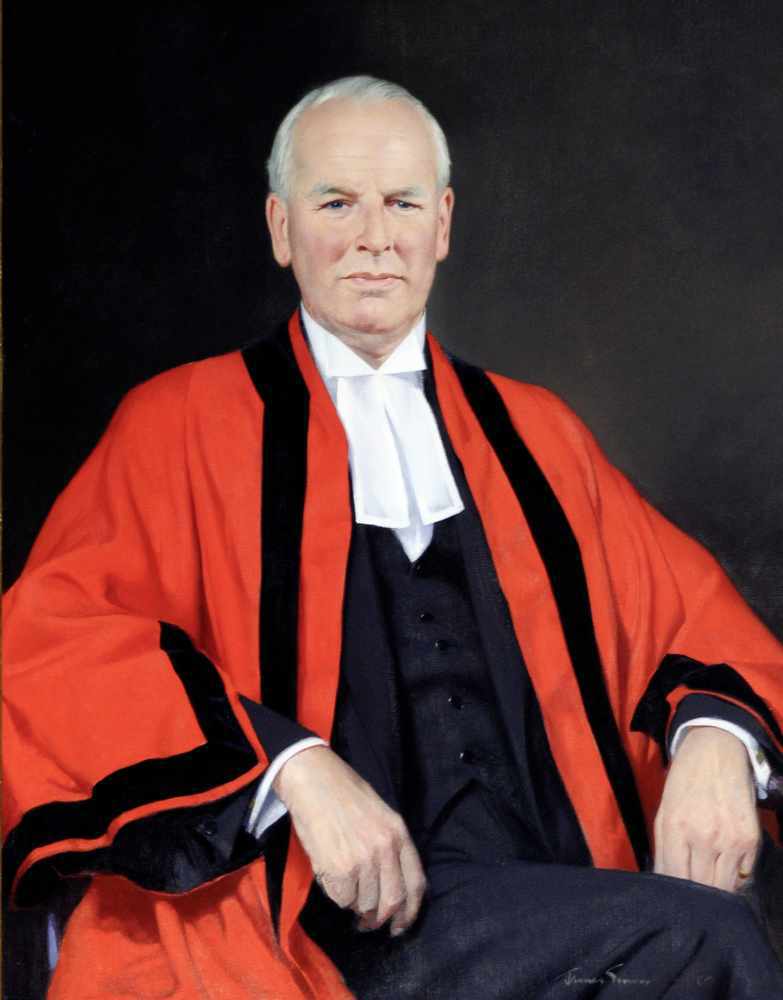
Sir Robert Le Masurier, Bailiff of Jersey 1962 – 1974, by Norman Hepple
In office at the time of the Common Market debate, Sir Robert was instructed to inform Her Magesty’s Government that Jersey wished to remain outside of the European Economic Community.

Sir Frank Ereaut, Bailiff of Jersey 1975 – 1985
Described as ‘the gentlest of gentlemen’ Sir Frank served with the Royal Army Service Corps during the Second World War and during his time as Crown Officer was also involved with Jersey’s EEC negotiations

Sir Peter Crill, Bailiff of Jersey 1986 – 1995
Sir Peter was one of the youngest to be elected to the States at the age of 26, as Deputy for St Clement – from 1951 to 58. He will be remembered by many for his handling of the Tomes Affair which ultimately led to the removal of the Deputy Baliff Vernon Tomes from office in 1992. After retirement he was active in the Société Jersiaise and the Jersey Arts Centre
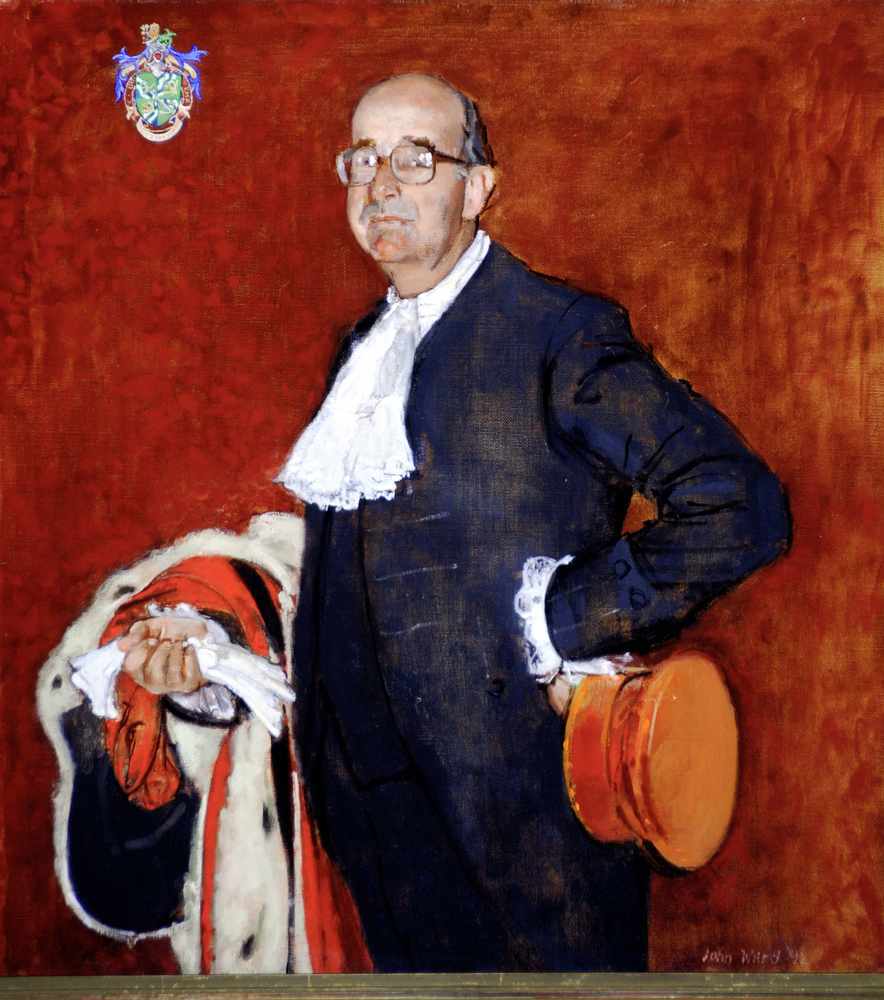
Sir Philip Bailhache, Bailiff of Jersey 1995 – 2009
Credited with introducing a number of modernisations to Jersey’s legal system, he became the first chairman of the Jersey Legal Information Board which he also set up. His brother William was appointed HM Attorney General in 2000 and Deputy Bailiff in 2009.

Geoffroy de la Hougue, 1329
Guillaume Brasdefer, 1331
Raoul Turgis, 1332
Guille Hastein, 1348 and 1352
Roger de Powderham, 1351
John Cockerell, 1356
Raoul Lempriere, 1362-1364
Richard de St Martin, 1367-1368
Jean de St Martin, 1368-1373 1374-1376
Geffroi de St Martin, 1373-74
Richard Le Petit, 1368-9
Thomas Brasdefer, 1378 1380-1391
Thomas de Bethom, 1386
Giefrey Brasdefer, 1395-1401
Colin le Petit, 1402-1403
Guillaume de Layc, 1405-1406
Thomas Danyel, 1406-1425
Jean Bernard, 1432, 1436-1444
Jean Lempriere, 1434-1438
Thomas de la Cour, 1435
Jean Payn, 1444, 1446
Regnauld de Carteret, 1446-1451
Jean Poingdestre 1452-1453
Nicolas Morin, 1459-1468
Jean Poingdestre, 1468-1477
Guillaume Hareby, 1479-1481, 1484-1485
Clement Le Hardy, 1486-1493
Jean Nicolle, 1494
Thomas Lempriere, 1495-1513
Hélier de Carteret, 1513-1523, 1527, 1530-1560
Helier de la Rocque, 1523-1524, 1529-1530
Jean Lempriere, 1524-1527, 1528 and Richard Mabon 1524-1527
Jasper Pen, 1528-1529
Clement Lempriere, 1529-30
Hostes Nicolle, 1560-1561, 1564
Jean Dumaresq, 1566-1583, 1586-1587, 1591-1596
George Paulet, 1583-1586, 1587-1591, 1596-1614
Jean Herault, 1615-1621
William Parkhurst, 1622-1624
Jean Herault, 1624-1626
Sir Philippe de Carteret, 1627-1643
Michel Lempriere, 1643, 1651-1660
George Carteret 1643-1651, 1660-1661
Michel Lempriere, 1651-1660
George Carteret, 1660-1661
Philippe de Carteret, 1661-1662
Philippe de Carteret, 1663-1665
Edouard de Carteret, 1665-1682
Philippe de Carteret 1682-1693
Edouard de Carteret, 1694-1703
Charles de Carteret, 1703-1715
John Carteret (2nd Earl Granville), 1715-1763
Robert Carteret (3rd Earl Granville), 1763-1776
Henry Frederick Carteret (1st Baron Carteret), 1776-1826
Thomas Le Breton, 1826-1831
Jean de Veulle, 1831-1848
Thomas Le Breton, 1848-1857
Jean Hammond, 1858-1880
Robert Pipon Marett, 1880-1884
George Clement Bertram, 1884-1898
William Venables Vernon, 1899-1931
Charles Malet de Carteret, 1931-1935
Alexander Coutanche, 1935-1961
Cecil Stanley Harrison 1962
Robert Le Masurier, 1962-1974
Frank Ereaut, 1975-1985
Peter Crill, 1986-1995
Philip Bailhache, 1995-2009

